Policies & Programs School & District Leadership Research & Tools Prop 39 School Retrofits
This section highlights state policies and national programs working toward zero energy schools; districts pursuing zero energy and the strategies they use to achieve this target; feasibility studies, assessment strategies, and other technical looks at zero energy school design; and case studies of successful zero energy school buildings.
Schools represent the ideal building type to lead the market shift toward zero energy buildings. Currently, schools make up the third largest subsector of commercial building energy usage. Many schools face growing populations, aging buildings, constrained operating budgets, and increasing energy bills. The cost of energy is one of few budget items schools can reduce without negatively affecting student learning. A zero energy school presents the opportunity for environmental, economic, and educational benefits including improved indoor air quality, higher attendance rates and teacher retention, valuable educational opportunities, lower maintenance costs, and more stable budgets.
STATE POLICIES & PROGRAMS
Better Building Zero Energy Schools Accelerator
The Zero Energy Schools Accelerator aims to make Zero Energy K-12 schools mainstream while enhancing the educational environment for the nation’s students. Energy consumption plays a significant role in the operational expenses of schools. 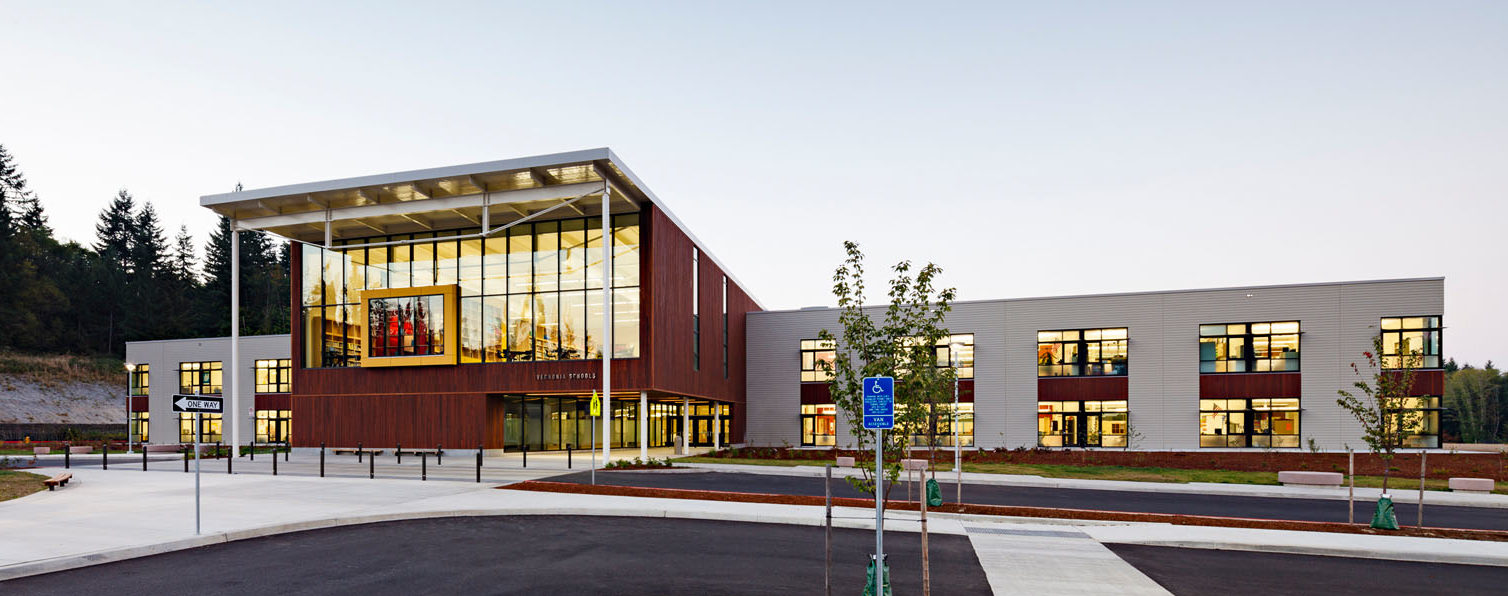 Each year, a significant portion of taxpayer dollars is spent on school utility expenses, thereby cutting into funding that could be allocated to resources for students. Accelerator Partners will work with key stakeholders to demonstrate that zero energy buildings can be constructed with today’s technologies at the cost of a conventional code-compliant school. The Accelerator will bring together participants working toward zero energy schools construction. Goals of the Accelerator include: identify strategies to overcome market barriers related to building zero energy K-12 schools; share solutions, resources, and technologies that help schools achieve zero energy goals; develop replicable road maps to build zero energy schools; and increase visibility and replication of best practice approaches and successful models.
Each year, a significant portion of taxpayer dollars is spent on school utility expenses, thereby cutting into funding that could be allocated to resources for students. Accelerator Partners will work with key stakeholders to demonstrate that zero energy buildings can be constructed with today’s technologies at the cost of a conventional code-compliant school. The Accelerator will bring together participants working toward zero energy schools construction. Goals of the Accelerator include: identify strategies to overcome market barriers related to building zero energy K-12 schools; share solutions, resources, and technologies that help schools achieve zero energy goals; develop replicable road maps to build zero energy schools; and increase visibility and replication of best practice approaches and successful models.
Collaborative for High Performance Schools
The Collaborative for High Performance Schools (CHPS) believes kids learn better in schools with good lighting, clean air, and comfortable classrooms. CHPS works with schools and experts to make changes to ensure that every child has the best possible learning environment with the smallest impact on the planet. CHPS helps facilitate and inspire change in our educational system. The goals of CHPS are to fundamentally change the design, construction and operation of schools to: protect student and staff health, and enhance the learning environments of school children everywhere; conserve energy, water, and other natural resources; and reduce waste, pollution, and environmental degradation. CHPS offers best practices manuals, criteria and assessments, technical resources and a database for high performance products for every phase and type of project. CHPS can help implement best practices in the planning, designing, operating, specifying for, commissioning or maintaining a school.
California Proposition 39 ZNE Pilot Program
Proposition 39, the California Clean Energy Jobs Act of 2012 (Prop 39), provides up to $550 million per year to improve energy efficiency and increase the use of clean energy in public schools and community colleges. The Prop 39 ZNE Schools Pilot will assist schools in retrofitting existing facilities to zero net energy (ZNE) by leveraging Prop 39 funding.
Kentucky Net-Zero Energy Schools Program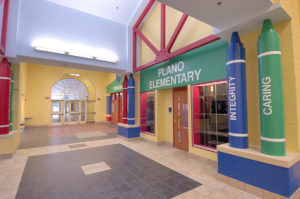
As schools become more energy efficient, it becomes more feasible to consider utilization of solar power to meet the energy demands of the facility. A number of schools are pushing energy efficiency levels below 30 kBtu/sf/yr, providing an opportunity to introduce Kentucky’s first zero energy school. ARRA funding provides a partial match to schools that install solar thermal or photovoltaic systems sufficient to bring the school to zero or near zero energy use.
Maryland Net Zero Energy School Initiative Grant Program
The Maryland Energy Administration (MEA) and the Public School Construction Program (PSCP) have partnered in a Net Zero School Initiative to construct three new net zero energy schools in Maryland. Through the 2012 merger of Constellation Energy, the parent company of Baltimore Gas and Electric Company (BGE), and Exelon Corporation, a Customer Investment Fund (CIF) was established to provide financial resources for long term energy efficiency and conservation goals. The Maryland Public Service Commission, the State of Maryland’s utility regulator, has approved the use of $9 million of CIF funding to create a program to enable the design and construction of three net zero energy public schools within the BGE service territory.
SMART Schools Program
The SMART Schools Challenge is divided into three sub-challenges: Energy Challenge, Recycling Challenge, and Green Schools Challenge. By enrolling in one, two, or all three of the sub-challenges, schools will receive a scholarship for building operator certification training, free technical assistance from the Montana Department of Environmental Quality, a SMART Schools mentor from the Montana Chapter of the US Green Building Council, and have the opportunity to receive resource conservation presentations. Schools that enroll in the SMART Schools Challenge join a network of likeminded Montana schools and can learn from their peers’ resource conservation experiences.
SCHOOL & DISTRICT LEADERSHIP
SFUSD Carbon Reduction Plan
SFUSD is embarking on a multi-decade effort to achieve carbon neutrality by 2040. The technology exists to construct buildings that use no more energy than they generate, and all new SFUSD buildings will be built to this standard. SFUSD’s goal is to achieve a 50% reduction in natural gas usage by 2030 and to stop burning it entirely by 2040. This document was developed with input from Facilities, Buildings & Grounds, the Bond Department, and numerous other stakeholders from the City of San Francisco and elsewhere. It spells out the District’s board-adopted goal to be carbon neutral by 2040 and the manner in which that goal shall be achieved.
SFUSD Project Requirements
Motivated by the California State Architect’s 7x7x7: Design Energy Water Challenge, SFUSD has completely transformed the process by which it designs, constructs, and modernizes its buildings in order to achieve a carbon neutral district by 2040. New buildings must be Zero Net Energy (ZNE) ready, modernized buildings are modeled so a pathway to ZNE can be incorporated into the design phase, and all facilities and deferred maintenance projects must adhere to a strict set of requirements to ensure alignment with ZNE goals. This document outlines the district’s requirements for windows, insulation, building controls, boiler replacement, plumbing fixtures, and rainwater catchment in building projects.
SFUSD Carbon-Neutral Schools Resolution: In late September, the Board of Education took action to ensure the future of San Francisco Unified School District would be sustainable by passing the Carbon-Neutral Schools Resolution. The resolution makes SFUSD the first in the nation to adopt fossil fuel reduction targets in an effort to curb impacts from global climate change. Among other strategies, the district’s Carbon Reduction Plan includes a zero net energy (ZNE) requirement for new buildings which strives to cut natural gas use in school buildings by half by 2030 and eliminate it altogether by 2040.
Hermosa Beach City School District ZNE Charrette
With support from Southern California Edison (SCE), New Buildings Institute (NBI) hosted a charrette and lead participants through a serious of discussions and brainstorming activities to begin defining Hermosa Beach City School District’s Roadmap to zero net energy (ZNE). Participants included the district superintendent, board members, a school principal, engineers, architects, sustainability consultants, city representatives, construction management team members, SCE, Savings By Design program representatives, and a Hermosa Beach student. The goals for the day were to gain a greater understanding of ZNE and ZNE practices and how they relate to the district’s long and short term goals, to develop stakeholder messaging around ZNE, and to work together to meet the school board’s goal of high performance sustainability while achieving cost effectiveness.
Discovery Elementary Zero Energy School
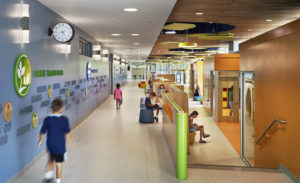 Discovery Elementary was designed to be a zero energy building, meaning that the amount of energy produced annually by on-site renewable energy sources is equal to the amount of energy used annually. Discovery is currently the largest zero energy school in the United States. As a carbon neutral producer of clean energy, the school offers a positive example of a solution to a global crisis – and along the way emboldens students with the expectation that they are creative participants in those solutions.
Discovery Elementary was designed to be a zero energy building, meaning that the amount of energy produced annually by on-site renewable energy sources is equal to the amount of energy used annually. Discovery is currently the largest zero energy school in the United States. As a carbon neutral producer of clean energy, the school offers a positive example of a solution to a global crisis – and along the way emboldens students with the expectation that they are creative participants in those solutions.
Greening Boulder Valley School District
Boulder Valley School District has accomplished much in the past three years to reduce energy consumption, and energy use has decreased significantly, saving the district thousands of dollars. The district met its five-year energy goal a year ahead of schedule. In 2013, the Energy Team completed a new Sustainable Energy Plan. This plan sets new five-six year targets, with the long term goal of zero energy capable buildings by 2050. The plan also provides detail on the methodology for achieving the new goals and specific strategies, including estimates on initial costs and ongoing savings.
San Diego Unified School District Energy Management Plan
This Energy Management Plan was designed to support Vision 2020, Quality Schools in Every Neighborhood, through sustainability initiatives, leveraging internal and external funding to provide high quality and energy efficient educational environments, supporting student achievement, while decreasing general fund expenditures and setting the vision towards zero energy for San Diego Unified schools.
Fayette County Sustainability Program: E=USE2 Program
This flagship initiative for students, E=USE2 (Education leads to Understanding Sustainability, Energy and the Environment), is a six-step program that guides hands-on investigations of energy data, energy awareness campaigns, and school improvement projects. Fayette County Public Schools has also adopted green building practices in all our construction and renovation projects to ensure that our schools are environmentally friendly. In addition, FCPS is an Energy Star partner committed to reducing consumption.
Adams 5-Star K-12 Schools
The Energy & Sustainability team is responsible for managing utility use and for promoting Social, Economic and Environmental Sustainability for the district. Between 2009 and 2016, the team has implemented conservation measures that have reduced energy costs by $1.1 million annually. The team has begun work on a strategy to eventually achieve a district goal of of zero waste and zero energy. The schools and district departments are taking steps to ‘go green’, working to be wise stewards of resources.
Cornell University 2013 Climate Action Plan Update & Roadmap 2014-2015
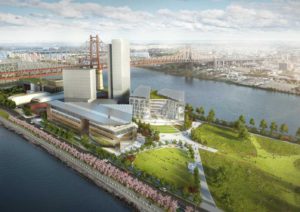 The Climate Action Plan (CAP) is Cornell’s overarching plan to move to a low carbon future. The original CAP was developed in 2009 by Cornell faculty, students, and staff with funding from the state energy authority, NYSERDA. The plan was intended to enhance the university’s core mission of education, research, and outreach, while cutting net carbon emissions to zero by 2050. Since 2008, Cornell has initiated a total of 62 actions to green its campus and has reduced gross emissions by nearly 32%, and by nearly 50% since 1990. These collective actions are significant steps forward and have established Cornell as a national leader among universities that have committed to climate neutrality.
The Climate Action Plan (CAP) is Cornell’s overarching plan to move to a low carbon future. The original CAP was developed in 2009 by Cornell faculty, students, and staff with funding from the state energy authority, NYSERDA. The plan was intended to enhance the university’s core mission of education, research, and outreach, while cutting net carbon emissions to zero by 2050. Since 2008, Cornell has initiated a total of 62 actions to green its campus and has reduced gross emissions by nearly 32%, and by nearly 50% since 1990. These collective actions are significant steps forward and have established Cornell as a national leader among universities that have committed to climate neutrality.
RESEARCH & TOOLS
Zero Energy Schools Charrette Toolkit
NBI’s toolkit for schools provides you with materials to help plan and lead a successful charrette for your school project. It can be used for almost any team aiming for high levels of energy efficiency or sustainability whether actively pursuing zero energy (ZE) or not. The toolkit lays out a step-by-step process, starting with pre-charrette planning through post-charrette actions and includes information specifically for a ZE building.
Zero Energy Schools Stakeholder Messaging Guide
This document is a companion piece to the Zero Energy Integrated Design Toolkit for Schools and provides overarching messaging with supporting facts, and identifies key stakeholders and drivers. Effective communication revolves around understanding the drivers that motivate decisions made by each stakeholder. In the school market, student educational outcomes are the primary driver of stakeholders. Framing messages with this driver in mind is key to communicating with them on a level that they understand and that motivates them.
Zero Energy Buildings Resource HUB
The Zero Energy Buildings Resource Hub is a project of the National Renewable Energy Laboratory and the U.S. Department of Energy. It provides resources — many of which are school-specific — on the pathway to zero energy, technologies to help achieve zero energy, building case studies, and programs available.
Advanced Energy Design Guide for K-12 Schools Pursuing ZE:
This design guide is for K-12 school buildings, and applies to all sizes and classifications (elementary, middle, high). Space types covered include administrative and office space, classrooms, hallways, restrooms, gymnasiums and multipurpose rooms, libraries, and food preparation and dining areas. The Guide establishes a set of energy performance goals for achieving zero energy. The goals are provided for all ASHRAE climate zones, in both site and source energy. Strategies on how to achieve these energy targets are provided throughout the guide.
Advanced Energy Retrofit Guide for K-12 Schools
The Advanced Energy Retrofit Guide for K-12 Schools is one of five retrofit guides commissioned by the U.S. Department of Energy. By presenting general project planning guidance as well as more detailed descriptions and financial payback metrics for the most important and relevant energy efficiency measures, the guides provide a practical roadmap for effectively planning and implementing performance improvements in existing buildings. The K-12 Schools guide provides convenient and practical guidance for making cost-effective energy efficiency improvements in public, private, and parochial schools.
Technical Feasibility Study for Zero Energy K-12 Schools
This technical feasibility study provides documentation and research results supporting a possible set of strategies to achieve source zero energy K-12 school buildings. The key barrier that this work addresses is the perception that zero energy K-12 schools are not technically achievable today because the technologies are not available and the design teams lack knowledge to implement them. The study uses typical construction practices and equipment to develop affordable solutions to the challenges of designing a zero energy school. The case studies and industry review provide evidence that the suggested solutions are technically viable and could be employed today at a reasonable cost.
Driving Market Adaptation of Zero Energy Schools
This paper documents the information used to examine the technical resources required; the methods needed to move these technical resources to school decision makers; and the recognition, certification programs, and campaigns that will be a catalyst to move to zero net energy (ZNE) schools. The goals of these strategies is to provide the right information and motivation to decision makers so that ZNE schools become routine in the built environment. The paper prioritizes the key areas to ensure market uptake of ZNE schools.
School Building Assessment Methods
The School Building Assessment Manual is a guide for communities anticipating the expansion of existing or construction of new school facilities. It is a collection of survey and discussion tools that will encourage school administrators, teachers, students, and parents to discover and reflect upon the physical features of school buildings. The intent of the manual is to identify what works and what does not work in K-12 school buildings.
School Regenerative Roadmap Net Zero Schools
This roadmap is designed for school district board members, administrators and facilities staff, funders, architects, engineers, builders, teachers, parents, students, and other K-12 stakeholders. It provides reasons why schools are one of the most promising building types for zero energy, and tips on how to incorporate zero energy concepts in a school design and operation.
Zero Energy Schools – Beyond Platinum
One of the fastest growing trends in school design is zero energy. This article examines the zero energy trend and looks at some of the exemplary projects targeting zero energy. It outlines the basics of sustainable design which are necessary to reach this goal without over-reliance on renewable energy.
Net Zero Schools Report
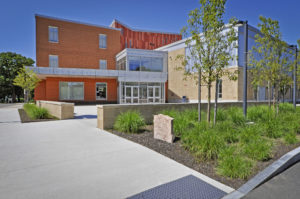 This report presents case studies on 15 zero energy schools in the U.S. and was prepared for Baltimore City Schools for use as it developed its 21st Century Building Plan. Research consisted of internet research and phone interviews with school representatives. All of the projects investigated incorporate passive design and time-honored concepts that have been consistently used to provide greater comfort in buildings, as well as state of the art technologies to control lighting and HVAC systems. Overall, the schools used similar technologies, though some technologies were specific to certain climate regions.
This report presents case studies on 15 zero energy schools in the U.S. and was prepared for Baltimore City Schools for use as it developed its 21st Century Building Plan. Research consisted of internet research and phone interviews with school representatives. All of the projects investigated incorporate passive design and time-honored concepts that have been consistently used to provide greater comfort in buildings, as well as state of the art technologies to control lighting and HVAC systems. Overall, the schools used similar technologies, though some technologies were specific to certain climate regions.
4 Reasons Net-Zero Energy Should Start with Schools
Each year, K–12 schools spend more than $8 billion on energy — more than they spend on computers and textbooks combined. Too commonly overlooked is the opportunity to cost-effectively improve the nation’s schools and enhance student performance by tackling the performance of the buildings. The majority of school facilities fail to meet basic occupant needs and fall short of meeting evolving education demands. This article reviews four benefits of zero energy schools which extend beyond energy cost savings.
Towards Net Zero Energy Schools – A Case Study Approach
A part of the zero energy movement garnering the most attention in the construction industry is K-12 public school construction. Alachua County’s Meadowbrook Elementary School (K-5) is a high performance school which can achieve zero energy status with some proven and effective practices. This paper discusses and compares the current baseline energy usage of the school since its completion and target opportunities to reduce energy usage. Recommendations based on the ASHRAE Advanced Energy Design Guide (50% Energy Savings) with the help of energy modelling and simulation would close the gap needed to make Florida schools energy self-sufficient. Further renewable energy production will be added by taking advantage of the Florida climate zone. The suggestions reviewed and applied in this paper will establish guidelines for prospective zero energy schools in general and the Florida based schools in particular.
State of Montana, K-12 Public Schools, Facility Condition Assessment
The State of Montana funded a condition and needs assessment and energy audit of K-12 public school facilities within Montana. In total, 2200 buildings were evaluated by field inspectors. Information on facility condition, educational characteristics, and technology infrastructure was collected. This data were compared with existing standards, and facility improvement priorities were formed.
Submetering of Building Energy & Water Usage: Analysis and Recommendations of the Subcommittee on Buildings Technology Research & Development
This report presents the Subcommittee on Buildings Technology Research & Development’s (BTRD’s) guidance and recommendations on the benefits and complexities in the use of submetering technologies for new and existing buildings. Proven demonstrations of new building technologies are essential to high-performance and sustainable building designs and operational practices. 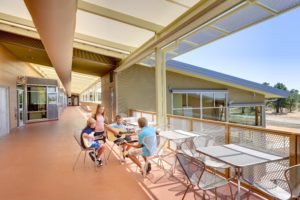 A promising avenue for advancement of these goals involves the deployment of advanced building instrumentation and submetering for real-time measurement of energy and water usage. This report documents the current state of submetering, relevant case studies, preliminary findings relating to submetering system costs and return on investment, and references to relevant publications for continual and accurate measurement of resource consumption, focused design and retrofit strategies, improved building management procedures, and changes in human behaviors that lead to significant reductions in energy and water usage.
A promising avenue for advancement of these goals involves the deployment of advanced building instrumentation and submetering for real-time measurement of energy and water usage. This report documents the current state of submetering, relevant case studies, preliminary findings relating to submetering system costs and return on investment, and references to relevant publications for continual and accurate measurement of resource consumption, focused design and retrofit strategies, improved building management procedures, and changes in human behaviors that lead to significant reductions in energy and water usage.
Zero Energy Schools Case Studies
Because zero energy buildings are new to most stakeholders involved in the design of a zero energy school, case studies are particularly important. They can help give designers and representatives from the school and community inspiration, ideas and strategies for design and construction. They can also help communicate the value of zero energy design for this building type. The Getting to Zero Forum’s schools case studies page links to narratives of some of the leading zero energy schools projects in North America. These case studies provide valuable lessons learned by those involved in zero energy schools projects.
